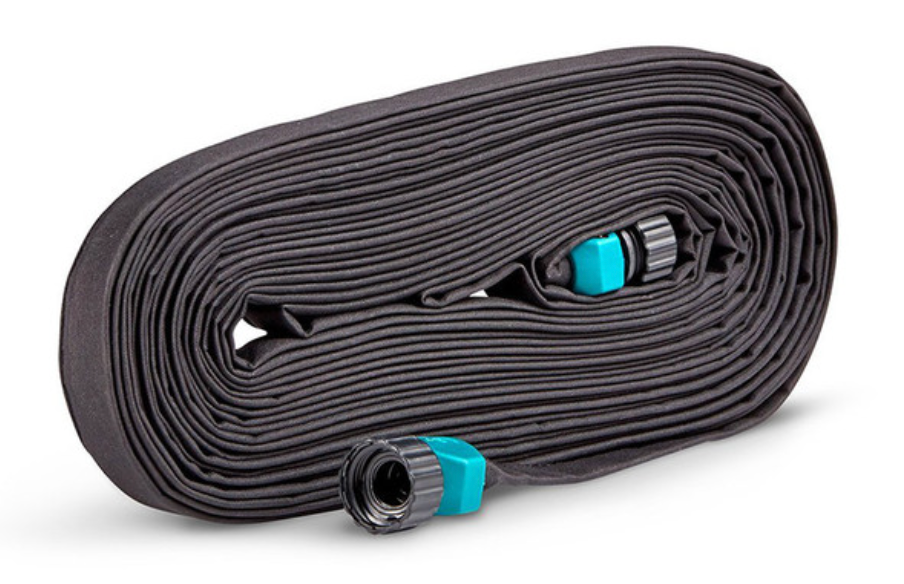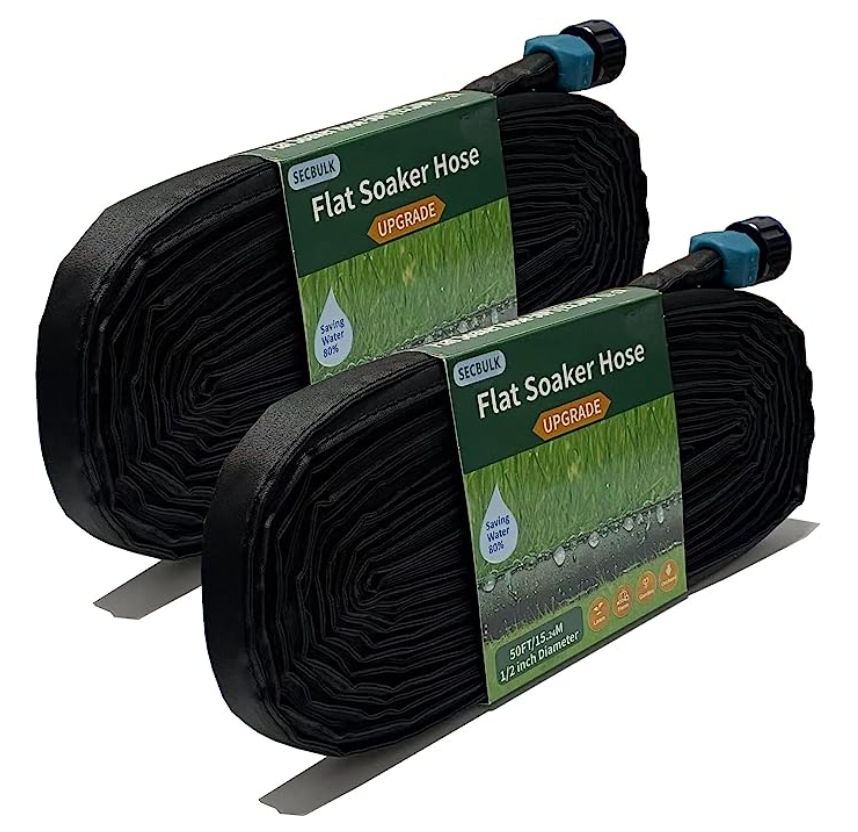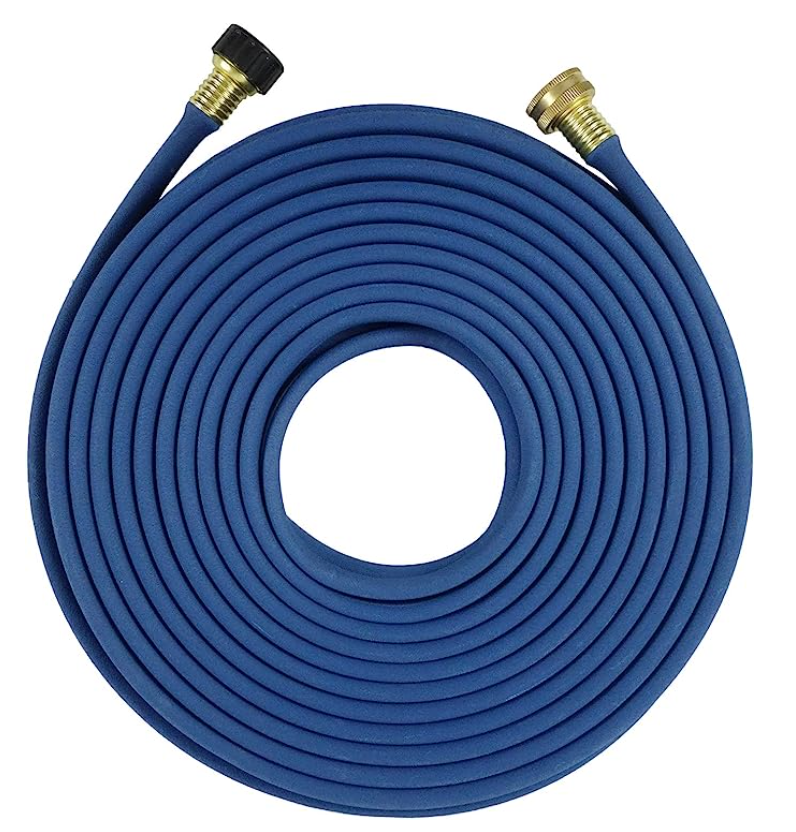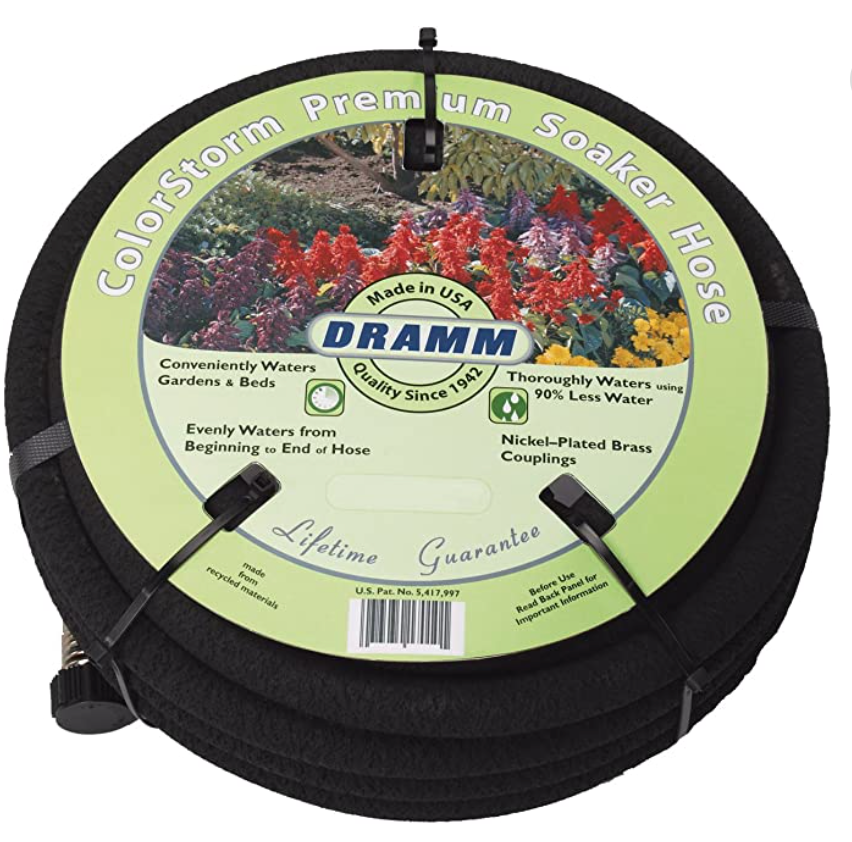The Top 7 Best Soaker Hoses In 2024
by Carl Anderson
Updated on December 4, 2024
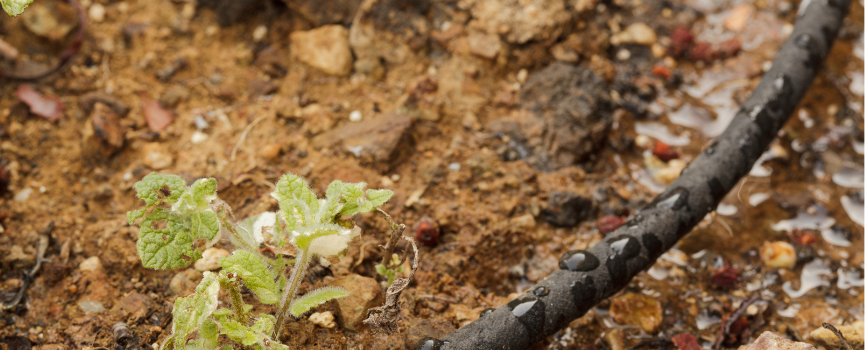
If you want a method that’s easier than drip irrigation but more efficient than hand watering, a soaker hose might be the perfect solution.
Soaker hoses release water evenly along their entire length, delivering moisture directly to the root zone of your plants or trees. This reduces the hassle of manual watering while helping prevent issues like fungal diseases caused by overhead watering.
However, not all soaker hoses are created equal. Picking up the first one you find at the store could leave you with a burst hose—or worse. To avoid costly mistakes, it’s important to choose wisely.
We’ve done the research for you, testing and evaluating the best soaker hoses on the market. Read on to find out which one will make watering your garden a breeze.
Our Best Soaker Hoses in 2024
List of Services
-
Best Overall - Rocky Mountain Goods Flat Soaker HoseList Item 1
The Rocky Mountain 50-foot soaker hose is a heavy-duty, double-layer hose that saves 70% water. It conserves this water by delivering it directly to the root of the plant to reduce evaporation. Best soaker hose overall.
-
Best for Garden Beds - Secbulk Flat Soaker HoseList Item 3
Secbulk Flat Soaker Hose is the best soaker hose for garden beds. It's durable, saves up to 80% of the water used and it waters even throughout the length of the line so its perfect for garden beds.
-
Best Durable - Water Right Soaker Hose
Water Right Soaker Garden Hose is the best soaker hose for durability. The holes on the line come evenly spaced out about 1/4 inch apart. It's made of high-grade polyurethane tubing and comes with lead-free brass fittings
-
Most Versatile - H2O Works
The H2O WORKS Garden Flat Soaker Hose 1/2 in x 50ft comes in as the most versatile soaker hose on the list. The tubing is corrosion and rust resistant so that it can lost longer the most of the soaker hoses.
-
Best Heavy Duty Soaker Hose - Linex Garden Soaker Hose
The Linex Garden Soaker Hose with 1/2 inch connectors at 50 feet is your best bet for a heavy duty soaker hose. This bad boy weeps water at about 2 gallons per 2 minutes at a rate of 60 PSI.
-
Best for the Money - Gilmour Flat Weeper Soaker HoseList Item 2
The Gilmour Flat Weeper Soaker is a cheap yet effective hose for watering your garden. Be careful not to over-pressurize the line; you should be good with watering your plants.
-
Best for Mulching - Dramm
The Dramm 17050 50-foot soaker hose is the best soaker hose for use under mulch. It's a lesser-known soaker hose on the market, but that doesn't mean it lacks quality or effectiveness.
Rocky Mountain Goods Flat Soaker Hose - The best soaker hose overall for watering plants or trees. It's lightweight and efficient. Great for easy watering. Check it out here.
Table of Contents
- The Top 7 Best Soaker Hoses - Full Analysis (Updated for 2024)
- Best Overall Soaker Hose
- Best Soaker Hose for the Money
- Best Soaker Hose for Garden Beds
- Best Durable Soaker Hose
- Best Versatile Soaker Hose
- Best Heavy-Duty Soaker Hose
- Best Soaker Hose for Mulching
- Sweet New Earth's Top Pick
- How To Buy The Right Soaker Hose
- Material
- Size and Weight
- Round or Flat
- Coverage Area
- Pressure Rating
- Backflow
- The Advantages of Owning A Soaker Hose
- FAQs
Things to Consider Before Buying
Material
Soaker hoses are made of polyurethane, polyvinyl chloride (PVC) and recycled rubber. They have holes throughout the line to allow water to seep into the soil around your plants. More expensive soaker hoses are more durable and can withstand higher water pressures because they have reinforced fiber in their line. Cheaper soaker hoses can be made of thin, brittle vinyl that may only last one season or two.
Size and Weight
The length of soaker line will be a huge factor in your decision. How big is your garden? Some soaker hoses can go over 100 feet long that should be able to cover most gardens. Their diameter ranges from 3/8 inch to 1 inch. Bigger hoses will be heavier and won't budge from water pressure. Smaller hoses are lighter, and may move around with a little bit of pressure.
Round vs Flat
Round hoses are more versatile than flat soaker hoses because they can be curved around trees and bushes without kinking, and they can be used in straight rows. Because of this, round hoses can be more expensive than flat. Flat hoses are great for straight-line gardening. So if you are planting your favorite summer vegetables, you may want to go flat.
Coverage Area
Big thing to consider with soaker hoses is how much coverage you need. Soaker hoses have different flow rates but you can expect anywhere from 6 to 12 inches depending on the brand. Be sure to check out the specific hose specifications before buying it.
The Top 7 Best Soaker Hoses - Full Analysis (Updated for 2024)
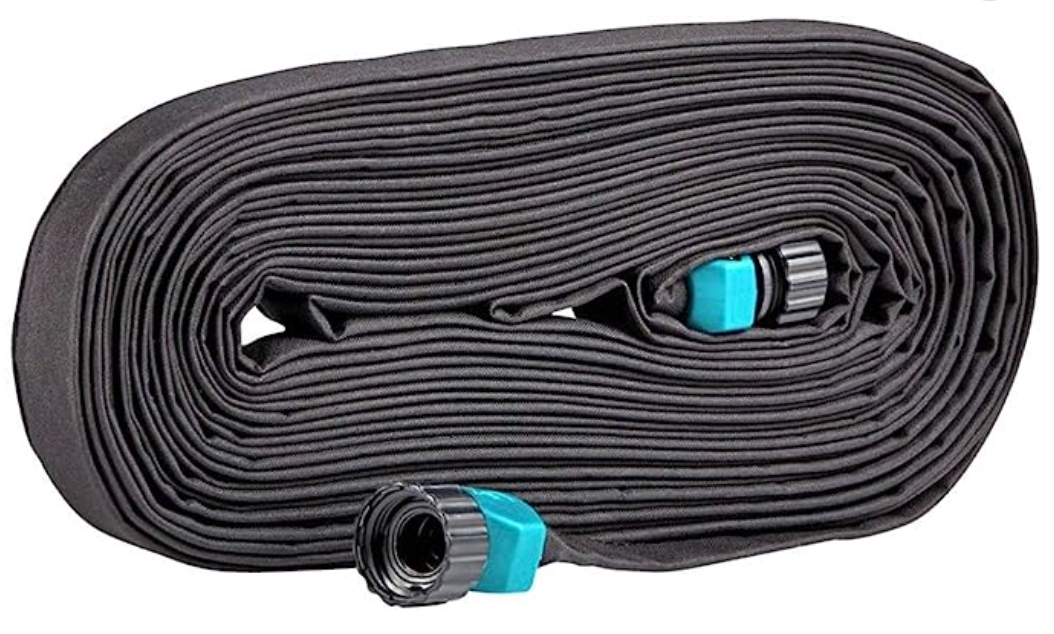
For running some water to a few plants without getting into the nitty gritty of drip irrigation, the Rocky Mountain 50-foot soaker hose is a great option.
The rocky mountain 50 ft soaker hose is a heavy-duty, double-layer hose that saves 70% of water. It conserves this water by delivering it directly to the root of the plant to reduce evaporation.
It has an eco-friendly design tubing lined with PVC for added durability. It's absolutely great for watering trees or other buses near the root base so you don't the foliage wet. Some people even use them for their rose trees.
The thing to watch out for, as with all soaker hoses, is the water pressure. Make sure you regulate the pressure well and you can hope to get up to three years from this line.
Some have reported that too much water pressure will blow out the line so be careful!
PROS
- Rolls out easily without kinks
- Great for straight garden rows, including trees
- Comes in three lengths
CONS
- Too much pressure and they can blow out
- Some users experienced leaking
If you are on a budget, the Gilmour Flat Weeper Soaker hose is worth a shot. You need to be careful with soaker hoses as most of them are made of recycled rubber.
The cheaper you go, the more quality issues you may have. We have current quality issues to report with the Gilmour flat weeper soaker.
This soaker hose runs pretty cheap and can go up to a max PSI of 60. However, you need to run it on a regulator of 30 PSI or you risk blowing out the line.
All soaker hoses work best for imprecise watering. When we use them, it's in a situation where maybe our drip irrigation systems need repair or aren't working properly (rare).
PROS
- Inexpensive
- Fast watering system
- Three sizes of tubing
CONS
- 60 PSI might be too much
- Lower-quality soaker hose
If you really want a higher-quality soaker hose irrigation system for your garden, then you can't go wrong with the Secbulk Flat Soaker Hose for garden beds.
It's durable, saves up to 80% of the water used and its completely environmentally friendly. It's consistent too. It waters even throughout the length of the line so its perfect for garden beds.
The cool part about this soaker hose is that you can connect it to another line. So everyone out there who loves DIY and going above and beyond with their garden setups, you can do that with these soaker hoses.
It's a super lightweight hose that can be carried around without issue. Not only that but you can roll it up and even it kink it without damaging the hose.
The manufacturer gives you a two-year guarantee on this soaker hose which means you know they stand behind the product. It can handle pressures from 60 to 100 PSI.
Again, if you are looking for a soaker hose for quick and easy watering for your garden, then you can't go wrong here.
PROS
- Conserves 80% of water
- Waters evenly throughout the length of the line
CONS
- Some users report quality issues

The Water Right Soaker Garden Hose takes the cake for the most durable soaker hose we observed on the market. The holes on the line come evenly spaced out about 1/4 inch apart.
It's made of high-grade polyurethane tubing and comes with lead-free brass fittings. The hose has a super smooth, flexible design so you can run it around bushes and trees without it kinking.
The manufacturer claims this soaker hose can run in freezing temperatures without exploding, but we haven't tested this. And we probably won't test it either.
No huge point in trying to water when the water is frozen (in our opinion) unless serious winter tree care is required or your plants need irrigation year-round.
As with most soaker hoses, the higher you run the water pressure the more you flirt with breaking the tube.
The Water Right hose doesn't appear to have a max PSI anywhere on the product so you don't want to go too high. We wouldn't push it past 25 PSI like most drip irrigation systems.
PROS
- High-grade tubing
- Durable material
CONS
- Leaky Ends If Used Improperly
The H2O WORKS Garden Flat Soaker Hose 1/2 in x 50ft comes in as the most versatile soaker hose on the list. It's relatively inexpensive and blue, and the manufacturer boasts it can work anywhere from 4 degrees Fahrenheit to 140 degrees Fahrenheit.
The tubing is corrosion and rust resistant so that it can lost longer the most of the soaker hoses on this list. It can even save up to 90% of water used bringing extremely close to drip irrigation level water efficiency.
The H20 Works Soaker Hose is made of PVC rather than recycled rubber meaning it is much more durable than typical soaker hoses on the market. The hose diameter is 1/2 inch and weighs just under 2 lbs per 25 feet of tubing.
The soaker hose works great for newly planted trees, shrubs and other plants. The hose connectors are made of brass, making them a bit better than the usual plastic other brands use.
This soaker hose distributes water evenly along its 50-foot length. All you need is about 20 PSI. If you run it over 50 PSI, you will, without a doubt, start to notice some spraying on the ends.
There really is no need to run the water pressure that high. The tubing comes with UV protectors to so the sun doesn't wear away at it throughout the day.
Nonetheless, this vibrant blue tubing will be great for watering around the base of your plants.
PROS
- Durable tubing with UV protectors
- PVC Material is high quality and flexible
CONS
- Actually the blue is a bit too bright - looks like you left a hose on the lawn
Another one of the best soaker hoses of the year would be the Linex Garden Soaker Hose with 1/2 inch connectors at 50 feet. This bad boy weeps water at about 2 gallons per 2 minutes at a rate of 60 PSI.
You shouldn't need this amount of water but it will depend on the plant or tree you are trying to water.
The tubing itself is super flexible and you can circle it around the base of a plant or a tree for easy irrigation if you don't want to attempt a drip irrigation system for trees.
The Linex garden soaker hose comes in a sleek black tubing that blends in a bit more than the H20 Works Garden hose we discussed above.
Cool part about Linex is that the founder is an avid gardener so you know he cares about creating products that work.
And he was dedicated to making efficient products which is something can admire.
The tubing is extremely versatile in the hot summer months. It's great for watering new seedlings, garden, shrubs and even bushes.
You can even put this system directly under soil or mulch, making it the second best soaker hoses for mulching (which we'll cover more in a bit). This makes it perfect because you protect your delicate vegetables and flowers from harsh water pressures.
PROS
- Black, flexible tubing that blends in
- Lightweight tubing
CONS
- Longer lengths of tubing need more PSI
The Dramm 17050 50 foot soaker hose is a great soaker hose for using under mulch. It's a lesser known soaker hose on the market but that doesn't mean it lacks quality.
The tubing runs at 5 gallons per minute for 50 feet of hose, and conserves 90% of water as it evenly irrigates throughout the length of the 50 foot hose.
Not only is it good under mulch but its even better for gardens and raised beds.
Like other soaker hoses, if you run too much pressure through it, the line is probably going to blow out so you need to be careful with how much water pressure you run through the line.
We wouldn't recommend turning the water on full blast when you get to watering your garden. Slowly open the line and adjust it according to the needs of the garden.
The wall of the tubing is 50% thicker than its predecessors, meaning it has far less potential for the geyser effect. This is, without a doubt, the best quality rubber soaker hose on the market.
Some reviewers were unhappy with the fact that the inside of the tubing is smaller than 5/8" so if you need to adjust the tubing y cutting it, you will have difficulty adding in an adapter.
But with soaker hoses, the point isn't really to be too much DIY. If you are looking to create a water-efficient drip irrigation system, then we recommend drip irrigation instead.
PROS
- Best recycled rubber on market
- Thick coating for added durability
CONS
- No expansion
Sweet New Earth's Top Pick for Which Soaker Hose is the Best
If we were biased and had to pick our favorite soaker hose, it would be the H20 Works garden flat soaker hose. It is high quality and versatile in its ability to water your garden.
We love the color of the hose and the efficiency at which it waters plants. If you want a great soaker hose, then you should start out with this one to see if you like soaker hoses or if you should move on to drip irrigation.
How We Chose The Best Soaker Hose
Choosing the best soaker hose was tricky. Personally, we typically stay away from them because we know how good drip irrigation systems work.
If you want to water your plants with true efficiency and perfection, look into drip irrigation. But if you just want something quick, then these are things you need to consider with soaker hoses:
- Material
- Size and Weight
- Round or Flat
- Coverage Area
- Pressure Rating
- Backflow
Material
Material is a huge factor in picking out a soaker hose. They come in three different materials:
- Recycled Rubber
- Polyurethane
- Flexible Polyvinyl Chloride (PVC)
Each material needs to be able to weep out water evenly along the length of the soaker hose. The problem with materials like these is the constant water pressure and expansion and contraction of the material to weep out water.
The materials can begin to fail almost immediately (if too much water pressure is applied) or over time.
The nature of most soaker hoses is that they last only a few years before you need to replace them.
Higher-quality soaker hoses come with reinforcement along the length of the tube. Some manufacturers use fiber to increase the durability of the hoses.
Cheaper tubes of thin vinyl become brittle quickly and won't last longer than two seasons.
Size and Weight
The size of the soaker hose will be a big factor for your garden. Most of them come 25, 50 or 100 feet long.
Shorter lengths of soaker hose are better for small flower beds, while longer lengths are better for long rows of vegetables or perennials. Not only is the length of the tubing important but also the diameter as well.
You can purchase soaker hoses as short as 3/8 inch and as big as 1 inch. The larger the diameter, the more the hose weeps, delivering water faster to your plants.
Larger hoses are going to be heavier but nothing crazy. The material and length of line will determine the weight.
We haven't seen a soaker hose over 10 lbs yet, but they may exist. Nothing the average gardener should worry about.
The important thing about weight is that it will keep the line in place. Lighter weight hoses will snake around under too much pressure whereas larger tubings will remain in place.
This is important because you don't want the tubing moving away from the roots of the plants, nor do you want it pushing out of mulch if you've buried it.
Round or Flat
The round and flat soaker hose (much like the soaker hose vs drip irrigation debate) debate is similar to the drip line vs drip tape debate we've covered before. Flat tubing is always going to be better for watering long, straight rows of vegetables, or plants.
Even with soaker hoses, some of the flat lines will only weep out water on one side of the tubing whereas round typically releases water all the way around. Both types of tubing come in the same materials we mentioned above.
It's much easier to kink a flat line of tubing over a round length of tubing. Kinks are bad. They will restrict water flow and cause pressure to build up in the line.
Round soaker hoses won't quick as easily and in general are a bit more versatile for watering plants. You can snake them around bushes and trees and roll them up without issues.
They are a bit more durable than flat lines and because of it, they are a bit more expensive to start.
Coverage Area
We said pretty much all we needed to say about coverage in the 'Things To Consider' Section above. Coverage with a soaker hose will be up to 12 inches on either side.
You'll need to refer to the manufacturer you purchase to determine the exact amount. It will also depend on how long the watering cycle lasts as well.
Watering for an hour or two will saturate more soil than just 30 minutes.
In short, make sure you know how to use a soaker hose.
Pressure Rating
Most soaker hoses don't require more than 20 PSI. When the water pressurizes the hose, it will evenly distribute along its length.
We noticed that most of the hoses don't come with pressure ratings but we would encourage you not to blow out the line with pressure. The biggest complaint with soaker hoses is that the lines break and either blow out entirely or spray out the ends.
We suspect this is because people simply blast water from the spigot. You don't want to do that with cheap recycled rubber.
The longer the length of the tubing, the more pressure it's going to require. The PSI of your spigot may not be able to support too much pressure over extended lengths of line.
If you need a complex irrigation system, we recommend you look into drip irrigation.
You can plan out your garden and watering needs without too many issues.
Backflow
Backflow can be a problem with soaker hoses. When the water isn't flowing, dirt or fertilizer can run back into the weep holes of the line. To prevent this, you can purchase a backflow preventer to hook up to the water spigot on your hose.
These are worth it with pretty much any drip irrigation system - not just soaker hoses. And it's something you should consider in addition to purchasing the line.
The Advantages of Owning A Soaker Hose
Soaker hoses come with three main benefits:
- Easy and efficient - turn on the house and allow water to weep out of it
- Conservation of water (some up to 90%)
- Watering at the root of plants (no fungal disease on foliage)
The biggest advantage of the soaker hose is that it isn't complicated. You lay out the line, water your plants and move on with your day. This is not a huge difference from drip irrigation that is already installed and running perfectly. Still, it is an advantage in that there is essentially no start-up time involved in installing a soaker hose.
FAQs
That's all there is to say about that! If you are looking for a quick and easy way to water your garden, then you can definitely give soaker hoses a shot with minimum investment.
If you want to build a more complex, more efficient watering system, the consider looking into other irrigation systems.
As with everything, the quality of the soaker hose and how you use it will determine how effective the hose is, and how long it will last.
Treat them perfectly, and you can hope for a few seasons of easy watering.

Carl Anderson is the main author of Sweet New Earth. He is an avid outdoors enthusiast who loves gardening. He spends his time reading, hiking and learning about new ways to optimize his garden. You can learn more about him here.

